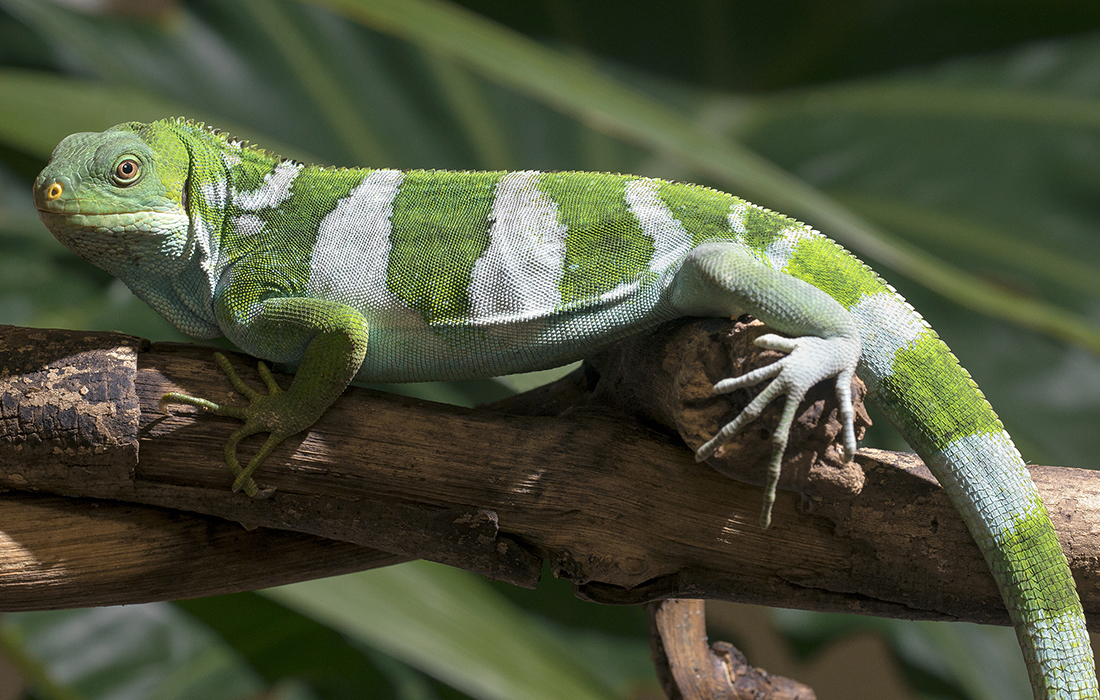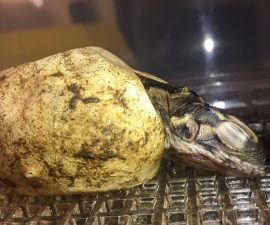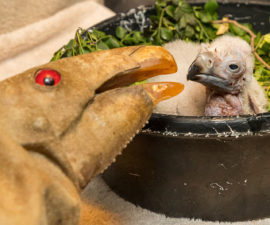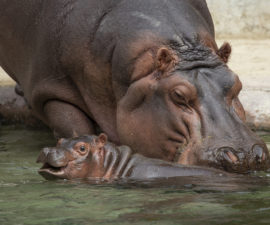They don’t fly or breathe fire. But brightly colored Fiji iguanas do look like tiny, scaly creatures from a fanciful medieval legend. It’s no wonder one researcher described these endangered iguanas as resembling “neon-colored dragons.”
BY Eston Ellis
Photography by Tammy Spratt
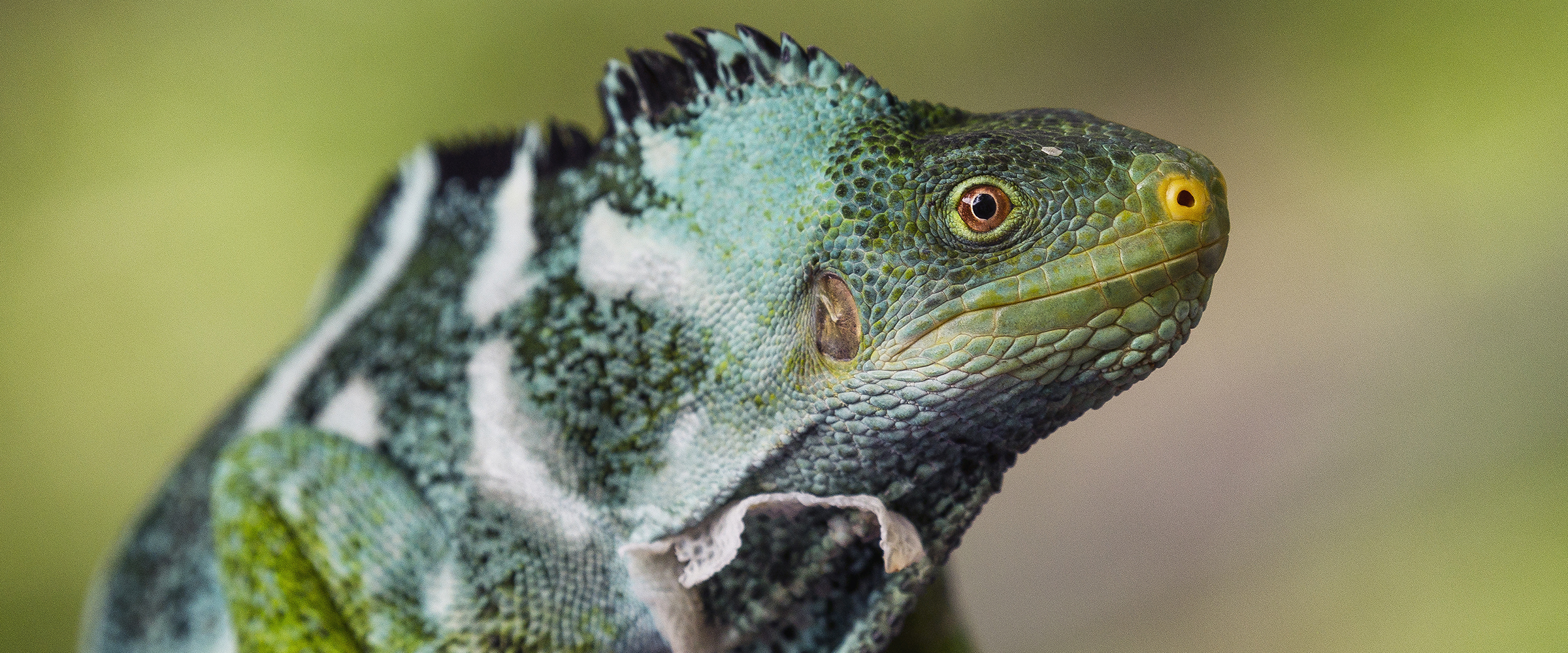
LEGENDARY LIZARDS
Unlike storybook dragons, Fiji iguanas are mellow creatures that have no fear of humans and will sit on an outstretched hand or atop a shoulder—but they would rather be in a tree. They spend their days in the canopy of wet and dry forests on the islands of Fiji, where they enjoy munching on leaves, buds, fruit, and flowers—especially vau, or tree hibiscus. And they rarely leave the trees, except to lay eggs or seek shelter during a tropical storm.
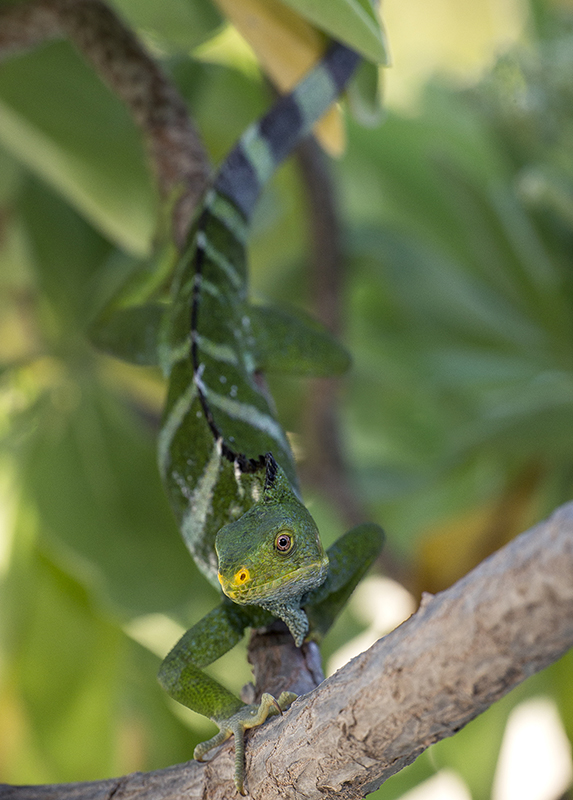
BRANCHING OUT
Fiji iguanas are well suited for a life in the treetops, able to sure-footedly traverse even the smallest branches with ease, seeming to disappear into the green leaves of the forest canopy.
Despite their fondness for a lush arboreal life, Fiji iguanas’ closest relatives are the sand-colored desert iguanas found more than 5,500 miles away, in Southern California and Northern Mexico. How iguanas got to Fiji is anybody’s guess, but many researchers believe they arrived millions of years ago, before the islands of Fiji broke away from a larger prehistoric supercontinent.
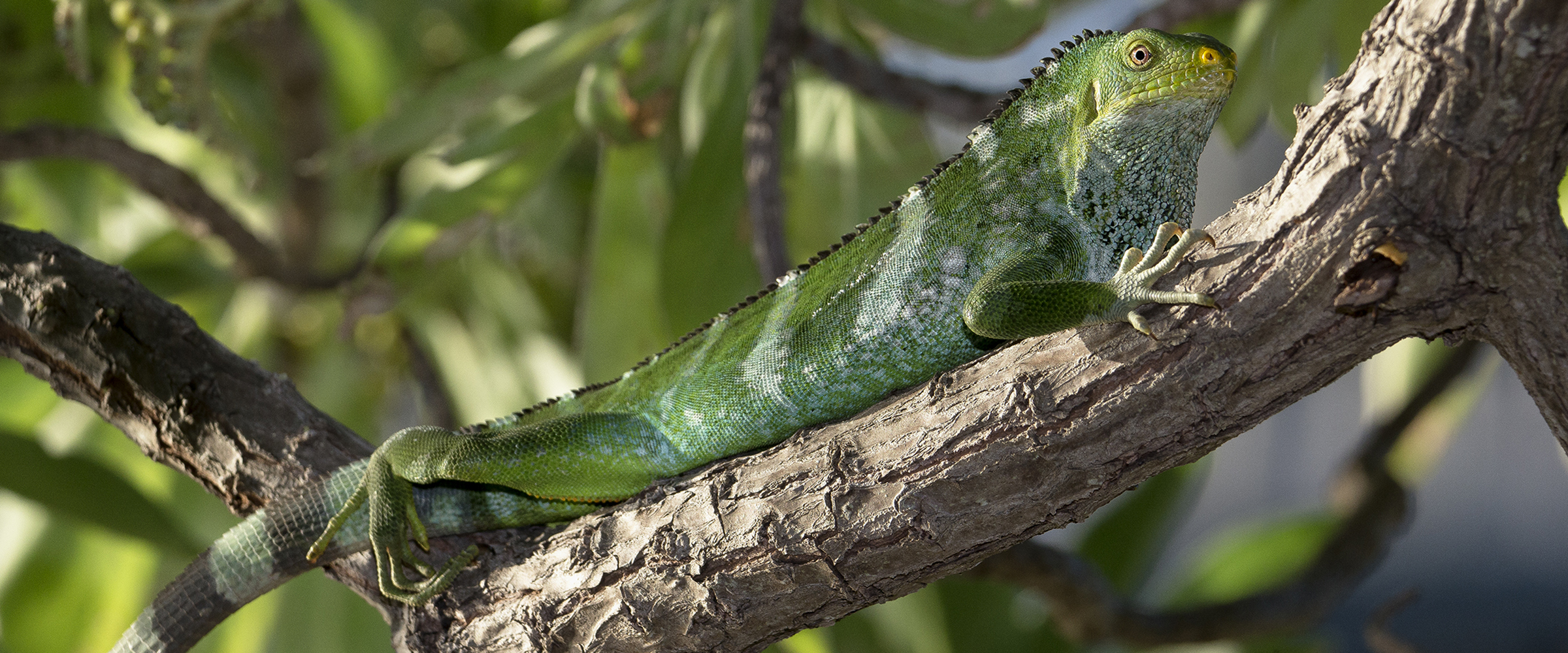
ENDANGERED ISLANDERS
Found nowhere else but on the islands of Fiji and Tonga, Fiji iguanas can perfectly balance on leaves and twigs as they make their way along the forest canopy—and their vivid green skin color, sometimes accented by white or blue bands, helps them blend into the surrounding vegetation. But they can’t run or hide from the increasing threats to their survival, including invasive species such as feral cats, rats, cane toads, and mongooses. On some islands, feral goats are eating the vegetation iguanas feed on. And deforestation—from agriculture and increasing development—is destroying much of their remaining habitat. Fiji iguanas are also vulnerable to poaching for the international exotic pet trade. Smuggling attempts have ranged from the brazen to the bizarre: one man charged with smuggling was caught taking iguanas out of Fiji by concealing them inside a hollow prosthetic leg.
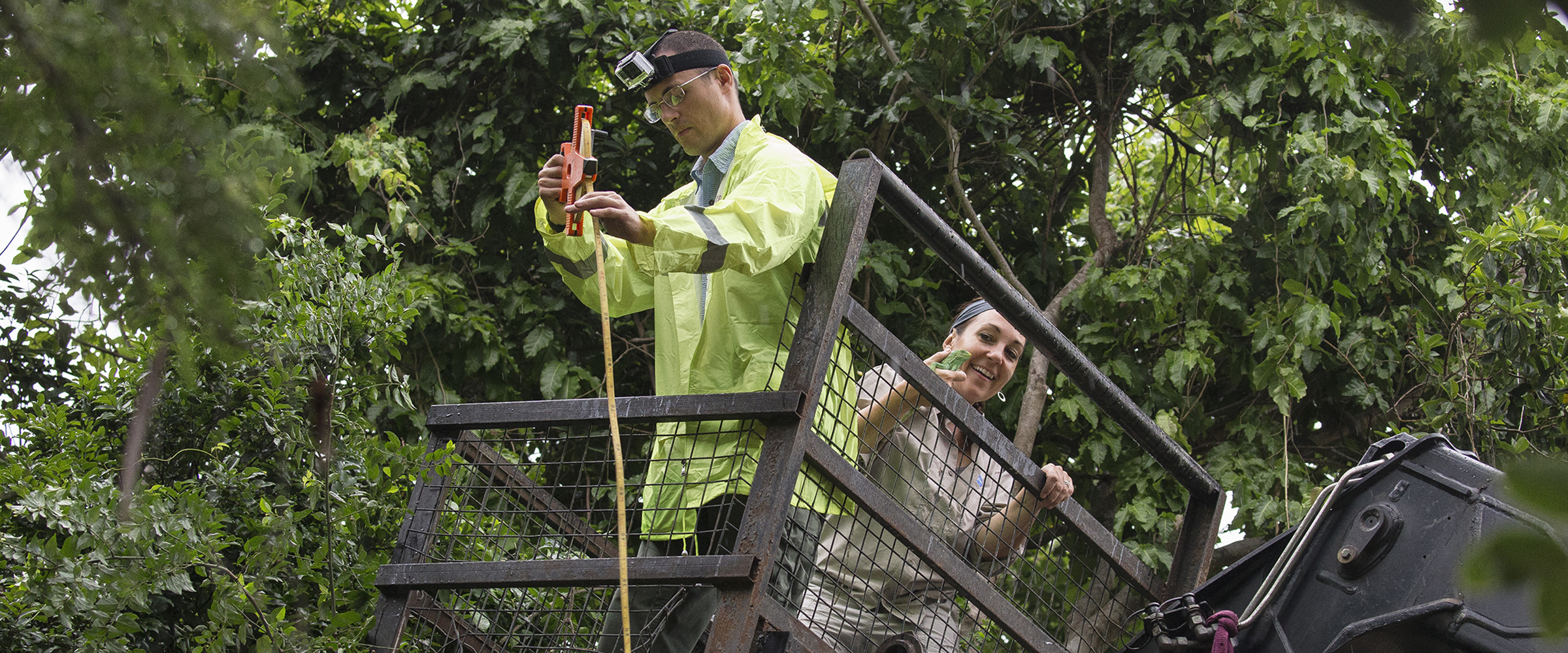
TRACKING FIJI’S IGUANAS
San Diego Zoo Global has been working with Fiji iguanas since 1965, when Prince Tupouto’ a-Tungi of Tonga presented six banded iguanas to the Zoo. The Zoo has learned much about Fiji iguanas and has been successful in breeding an assurance population in managed care—the most successful breeding colony outside Fiji—with more than 125 hatchlings born here since 1981.
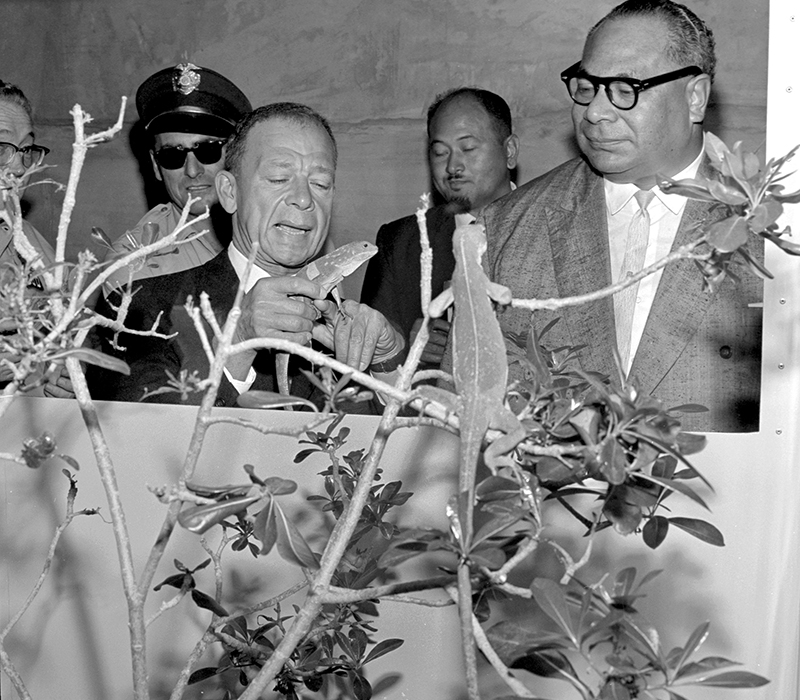
HISTORIC ARRIVAL
The San Diego Zoo received its first Fiji iguanas in 1965, as a gift from Prince Tupouto’ a-Tungi of Tonga (right), pictured with Zoo board of trustees member Howard Chernoff (left).
In addition, San Diego Zoo Global has been participating in efforts to both protect existing populations in Fiji and reintroduce iguanas into their island habitats. Since 2012, Kim Lovich, curator of herpetology and ichthyology at the San Diego Zoo, has been participating in research in Fiji with partners including the U.S. Geological Survey (USGS), Australia’s Taronga Zoo, and the National Trust of Fiji. Researchers are locating, measuring, and tracking the movements of Fiji iguanas.
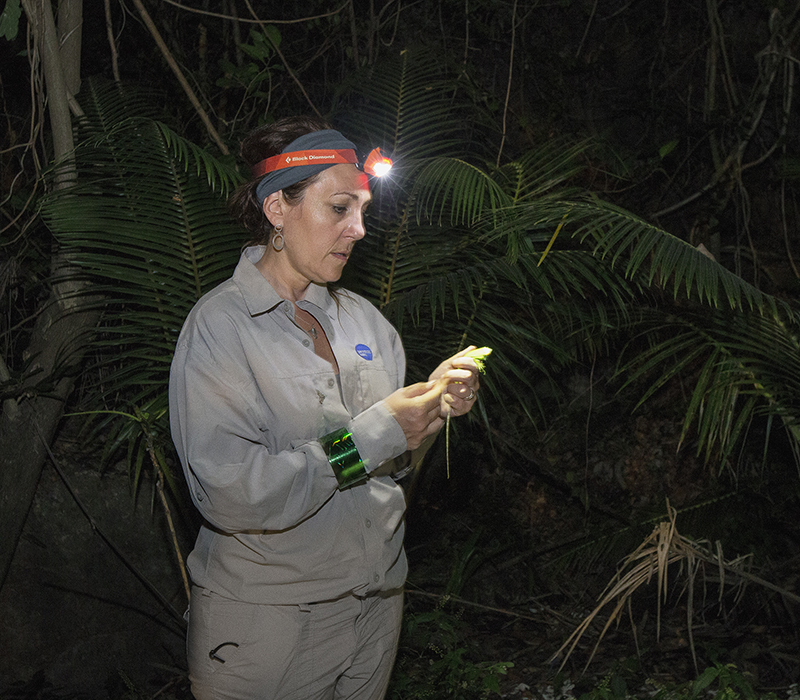
IN THE FIELD
Since 2012, San Diego Zoo Curator of Herpetology and Ichthyology Kim Lovich has been participating in “boots on the ground” iguana conservation efforts on the islands of Fiji with San Diego Zoo Global and its partners.
In addition, San Diego Zoo Global is helping with efforts in Fiji to maintain a healthy assurance population, raising hatchlings until they are large enough to avoid predators (a process known as “headstarting”), and then releasing the juvenile iguanas into their island habitats. While researchers from San Diego Zoo Global are currently making an average of two to three trips to Fiji each year, visiting about six islands per trip, there are still many questions left to answer. “We just don’t know how many are left,” said Kim. “We don’t want it to be too late for them. It’s almost a race.”
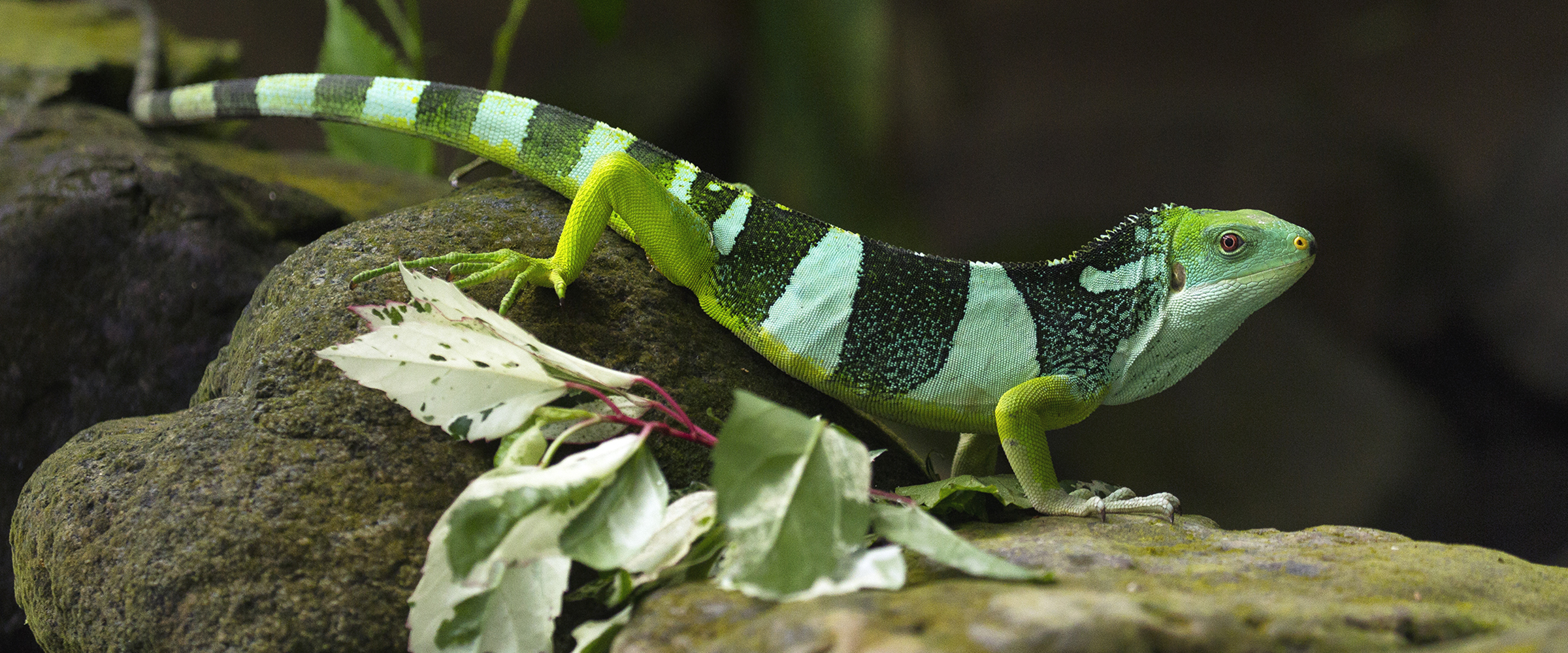
REVEALING NEW SPECIES?
Three different Fiji iguana species have been officially recognized: the Fiji crested iguana Brachylophus vitiensis is listed as Critically Endangered on the International Union for Conservation of Nature (IUCN) Red List of Threatened Species, and the Fiji banded iguana Brachylophus bulabula and Lau banded iguana Brachylophus fasciatus are both listed as Endangered.
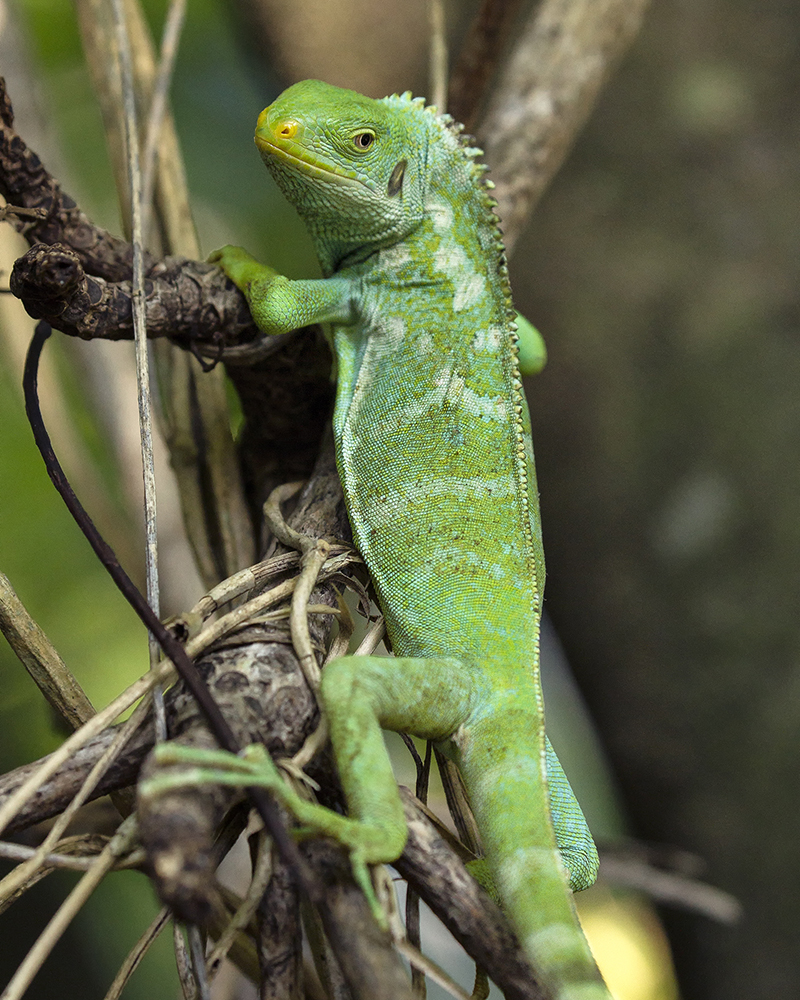
HANGING ON
Genetic research has shown differences in Fiji iguanas on each island surveyed. However, the smaller islands are especially vulnerable to storms, and one tsunami could potentially wipe out an entire population.
Researchers believe there are even more species yet to be identified; the iguanas of each Fijian island have different characteristics, and it is possible that each island’s iguanas may, in fact, be unique, endemic species. The size of these iguanas varies, depending on the island they call home, but they can measure up to 21 inches long (including the tail).
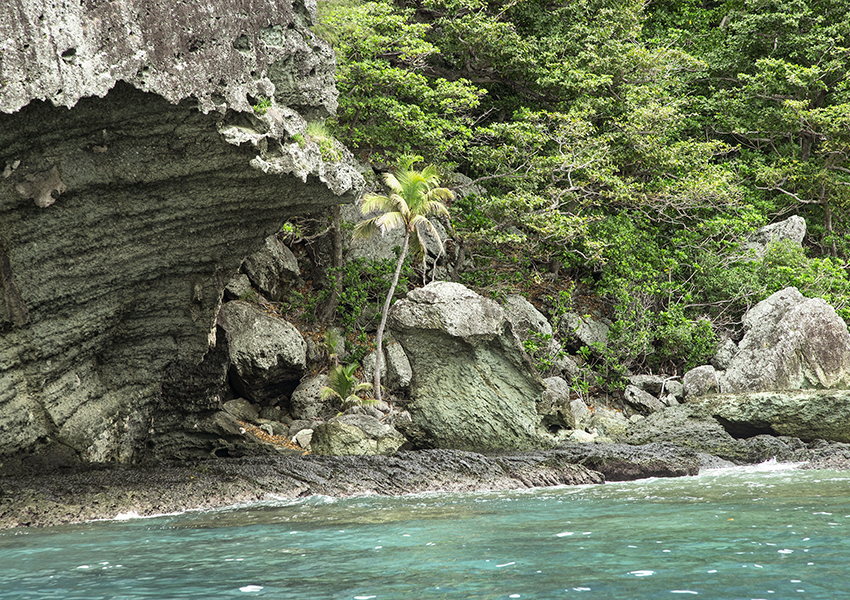
CHALLENGING ACCESS
Just getting to the remote islands where Fiji iguanas live—many of which have steep cliffs that make for difficult access from a boat—can sometimes be as challenging as locating the iguanas in their thick forest habitats.
Fiji has more than 300 islands, about 110 of which are inhabited by people, but only about 30 of the islands are known to have Fiji iguana populations. All of Fiji’s iguanas are endangered—and some islands have fewer than 10 of these remarkable creatures left, Kim said. In general, crested iguanas are found in dry forest habitat of Fiji’s western islands; while banded iguanas are found in wet tropical forest habitat to the east. However, different island iguanas may exhibit characteristics of both.
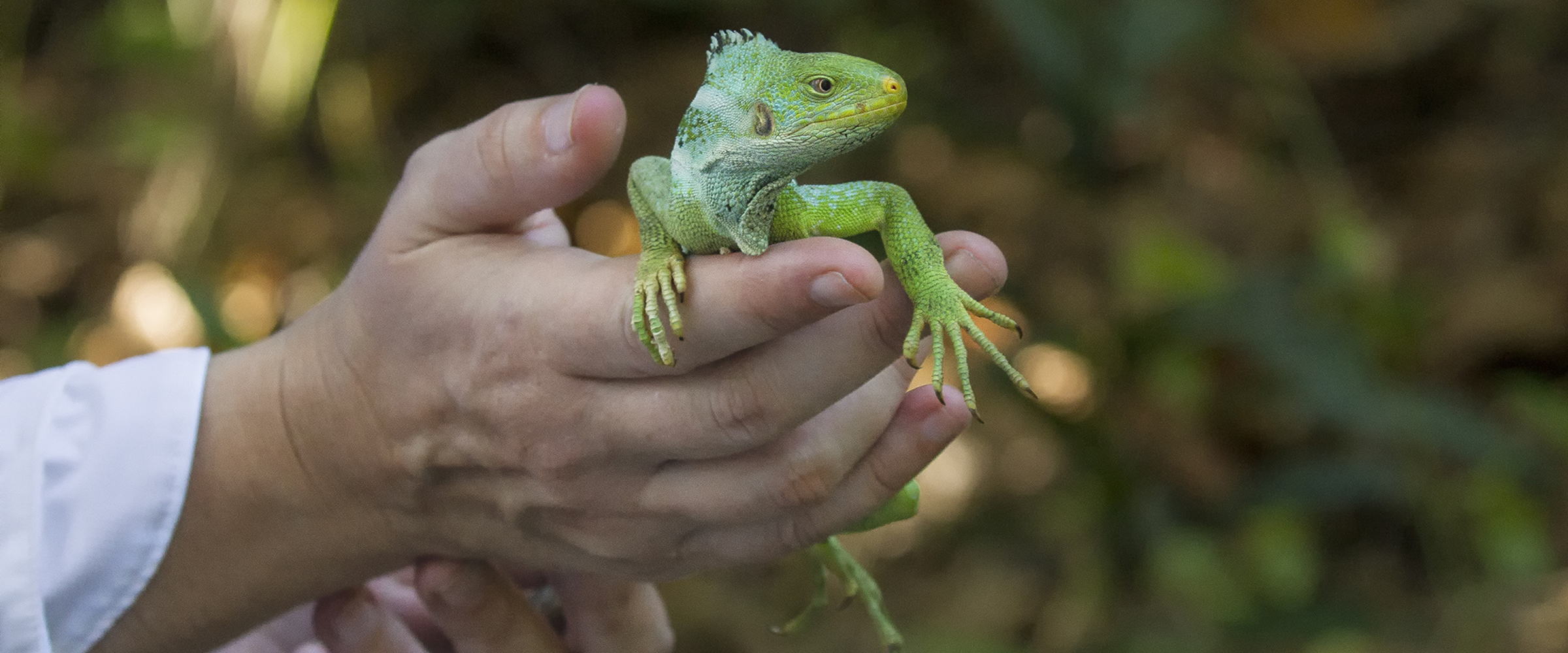
COMMUNICATING WITH COLOR
Fiji iguanas have reactive skin color that can darken after hours in the sun, or can turn very dark green if a male iguana gets agitated by seeing another male. When a male Fiji iguana spots another male, it also bobs its head wildly as it becomes increasingly more agitated. “We provide shade cloth between the males that live at the Zoo—but it isn’t to provide shade,” Kim said. “If they see each other, they get so angry. They are so gentle when you are holding them in your hands, and they would never bite you. But when they see another male, they just go crazy.”
Fiji iguanas “taste” their environment, using their tongue to gather a wealth of sensory information. Males have pores between their scales that excrete a waxy, yellowish material they use to mark their territory, Kim said. “It’s one of the ways iguanas can find each other in the forests of Fiji.”
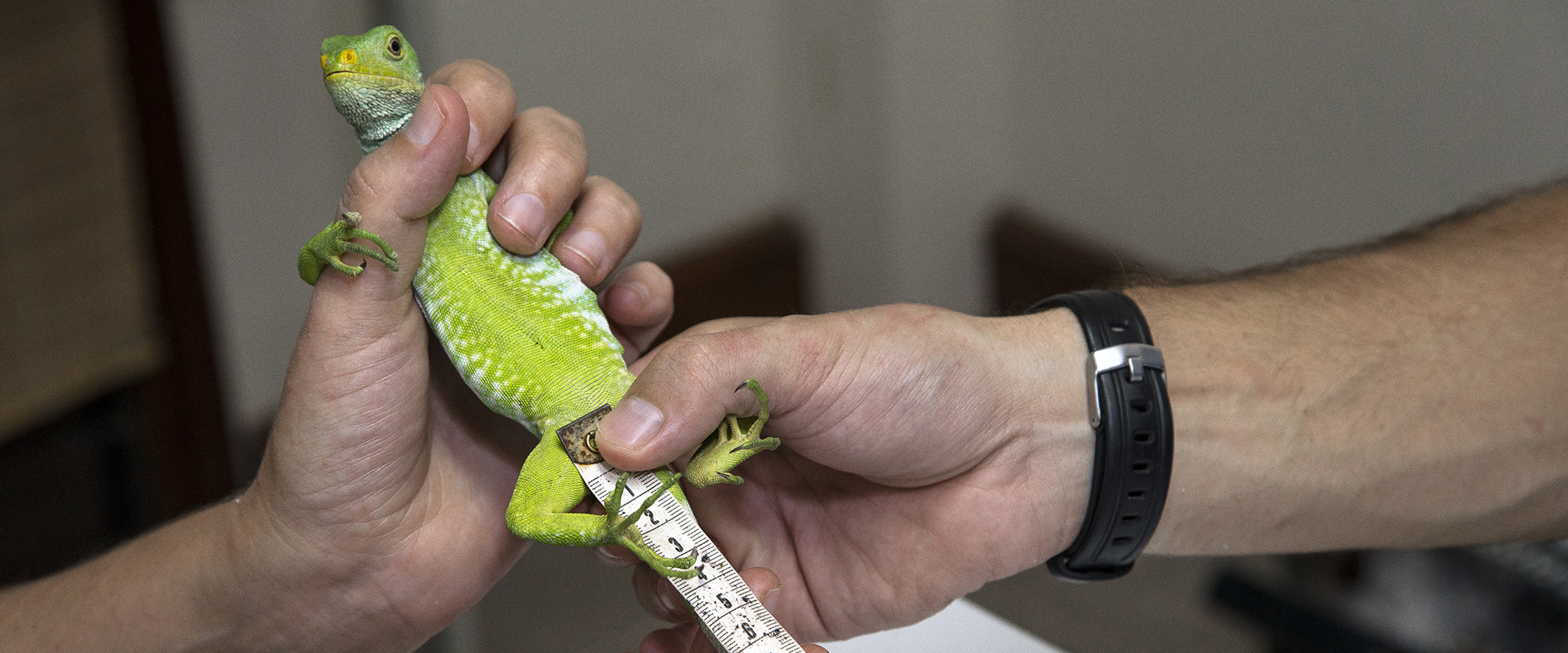
Lending a Hand
The San Diego Zoo manages the Association of Zoos and Aquariums’ Species Survival Plan (SSP) for Fiji banded iguanas, and Kim serves as SSP coordinator. The other Fiji iguana SSP, for Fiji crested iguanas, is managed by the Taronga Zoo. “Although I manage the banded iguana species’ SSP, we are now finding that there are not just banded and crested iguanas—there are dry forest and wet forest iguanas,” Kim said. “This is an SSP for banded iguanas, but it is helping all species.” The goals of the SSP are not only to maintain genetic diversity in zoos, but also to support conservation efforts in Fiji, building partnerships, supporting educational outreach, and providing husbandry guidance for assurance populations on the islands. “Our breeding colony population is a surrogate for everything we do,” Kim said. “What we’ve learned from them gives us the information we need to help care for the species in Fiji. Since 1965, we have learned how to feed them, breed them, and give them proper veterinary care—and we now provide advice on how to best take care of them, to help their populations recover in their home islands.”
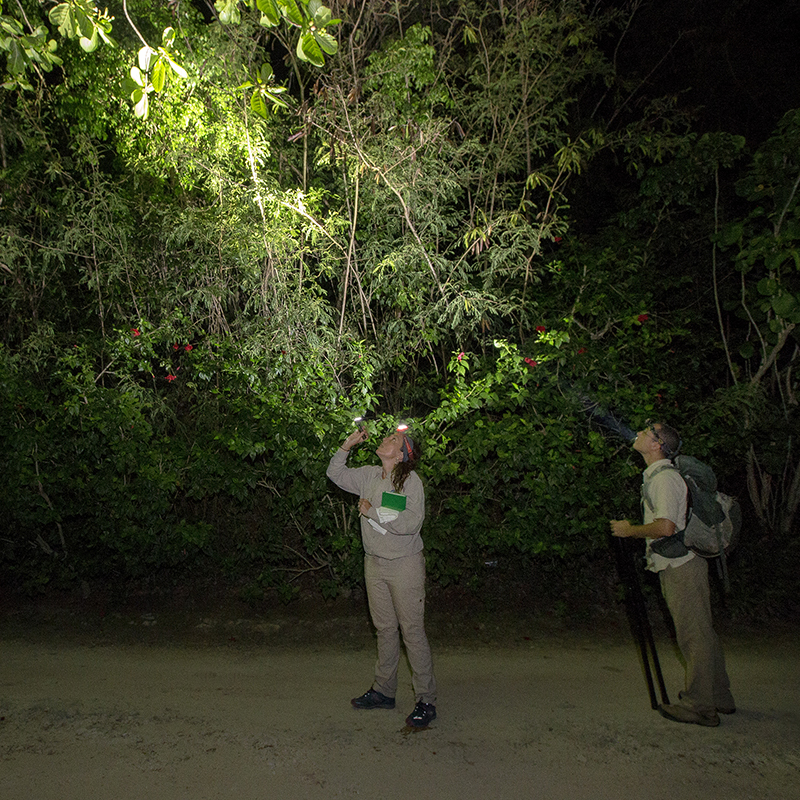
THERE THEY ARE
During night surveys, researchers locate and collect data on Fiji iguanas in their island habitats, including some tagged iguanas that were previously released from headstarted or assurance colonies.
The Zoo’s collection was where genetic research on Fiji iguanas first began. When the Zoo received its first Fiji iguanas, only one species—the Lau banded iguana—was thought to exist. In 1981, Fiji crested iguanas were identified on two Fijian islands and became recognized as a second species. “In managing our collections, we wanted to make sure our animals were viable for reintroduction,” Kim explained. “We decided to look at the genetics of our iguanas, along with those of iguanas in their habitats in Fiji.”
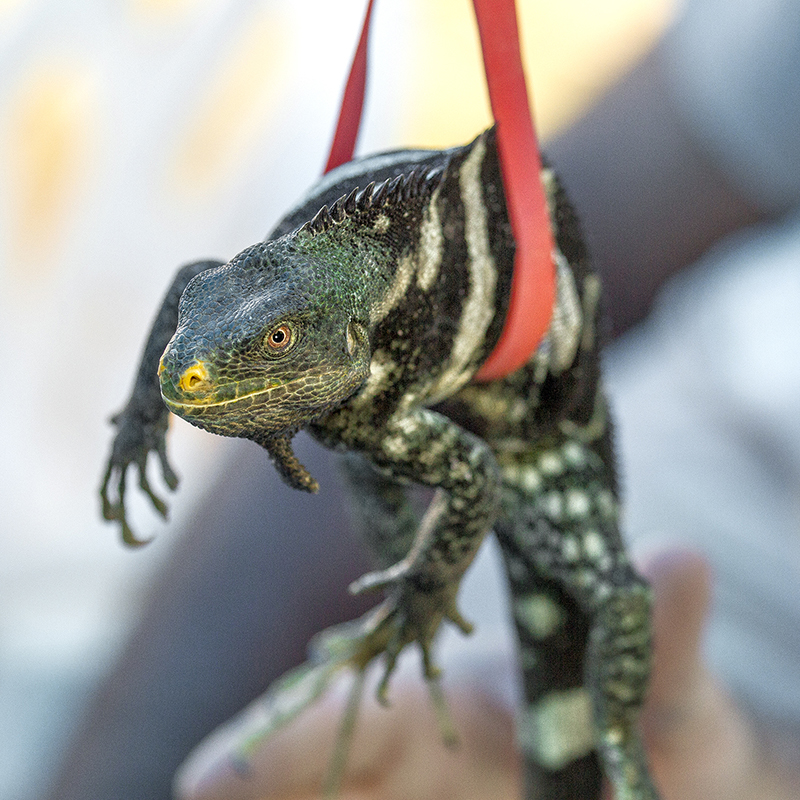
WEIGHING IN
San Diego Zoo Global is participating in research to locate, weigh, measure, examine, and track Fiji iguanas on their home islands.
The Institute for Conservation Research’s Conservation Genetics team studied Fiji iguanas in the Zoo collection, in Fiji, and at the Taronga Zoo. In 2008, DNA sequencing proved that the Zoo’s founder individuals and first generation offspring were grouped with Fiji crested iguanas or a third species identified by researchers—Fiji banded iguanas—instead of Lau banded iguanas.
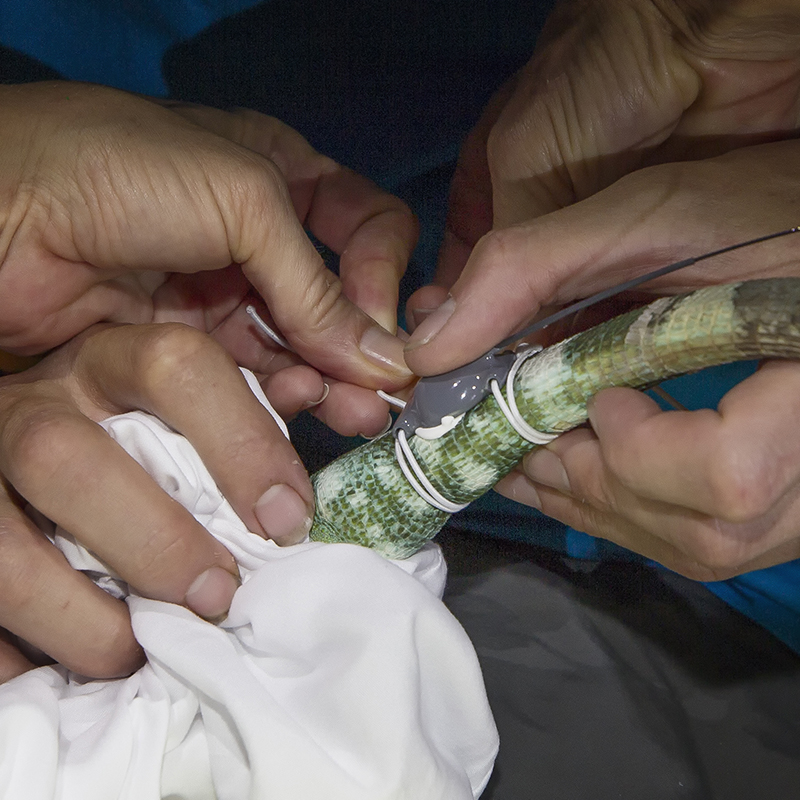
MONITORING IGUANAS
Researchers fitted some Fiji iguanas with tiny transmitters, to track their movements and learn more about individual island populations.
That prompted more testing—in Fiji. To date, San Diego Zoo Global staff and our partners in the field have been involved in extensive field surveys and have collected samples from more than 200 iguanas on more than 30 islands. Results from DNA testing show that existing Fiji iguana populations on the islands have an extremely high degree of genetic diversity, Kim said. “When you look at the iguana population on each of the small islands, you will find that each looks different—and is genetically different.”
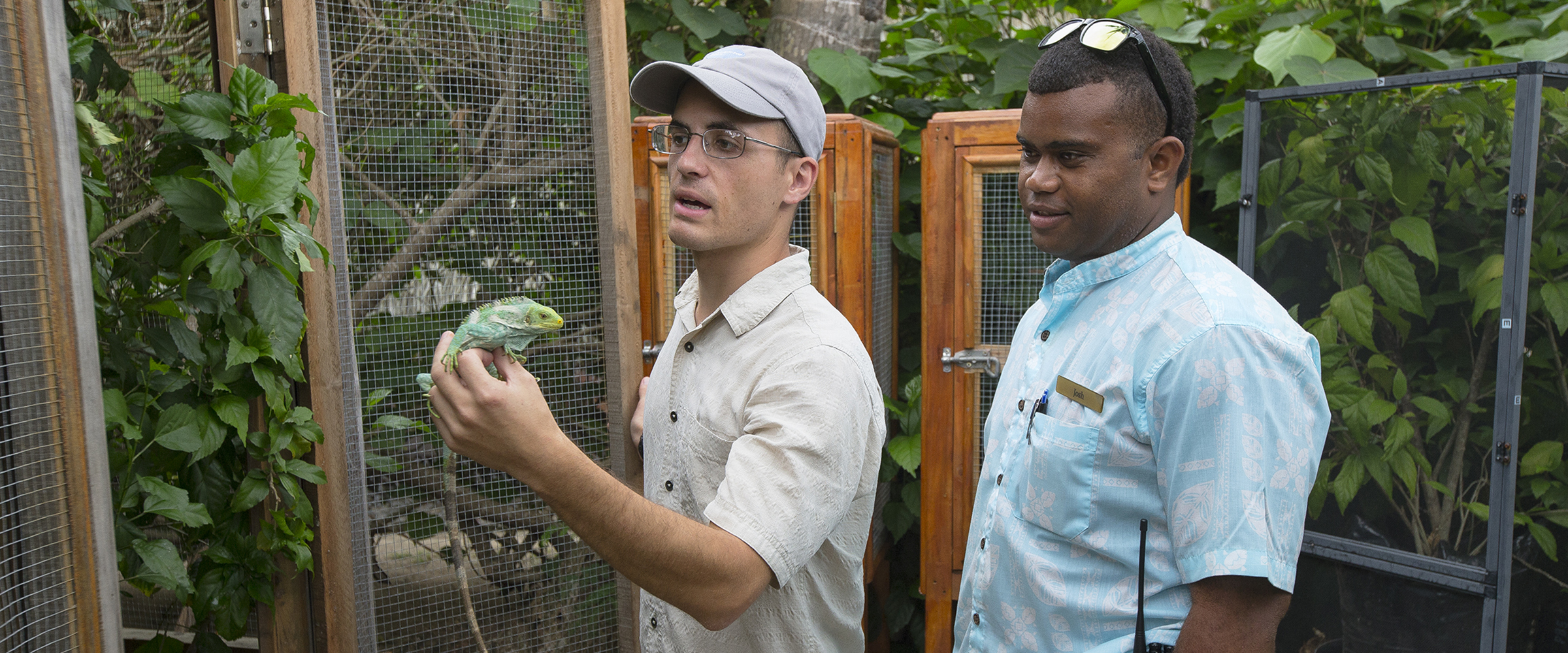
HELP FOR HERPS
San Diego Zoo Global participated in the development of a recovery plan for the Fiji crested iguana, written by the National Trust of Fiji and USGS. The Fijian island of Yadua Taba is now home to a national park where more than 12,000 crested iguanas are now believed to thrive—because introduced predators have been removed and are no longer a threat, Kim said. “What that shows is that although Fiji iguanas are under a great amount of pressure, they can recover.”
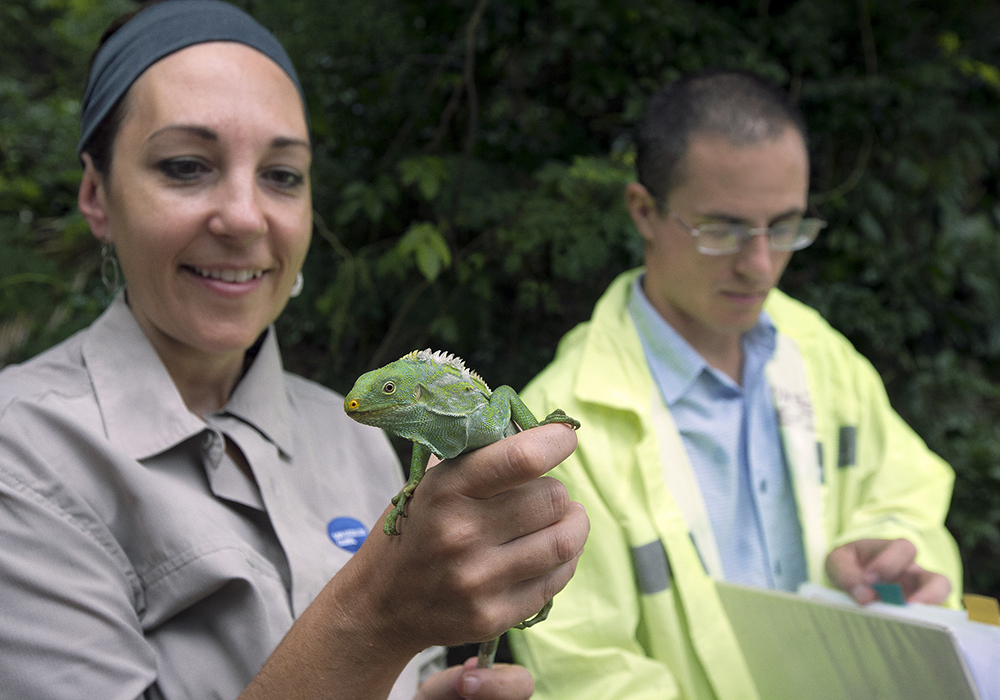
CONTINUING EFFORTS
San Diego Zoo Global has participated in a wide range of conservation projects, including island releases of Fiji iguanas raised in protective care.
San Diego Zoo Global recently signed a Memorandum of Understanding with the National Trust of Fiji. “We hope to help build capacity in Fiji, and help create an effective ranger program,” Kim said. And both headstarting and reintroduction efforts continue in Fiji, including a new facility for Fiji crested iguanas in partnership with an island resort in Malolo.
“Without help from our partners and local residents, the releases wouldn’t be successful,” Kim said. “On the local level, people are engaged and are uniting to preserve this species. Our job is to help them succeed.”

